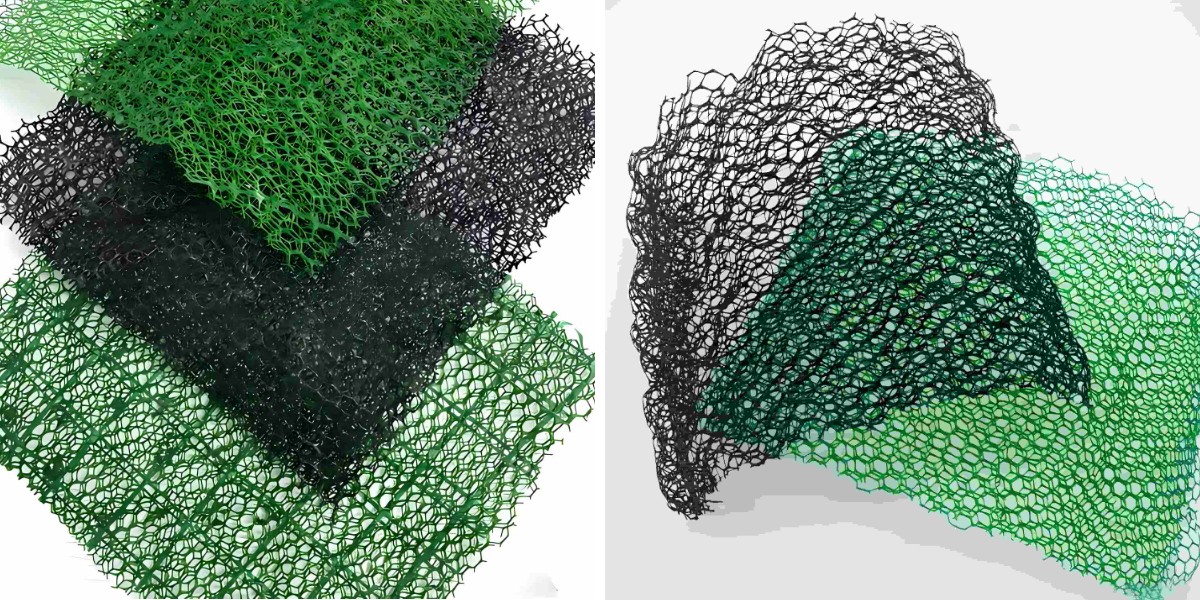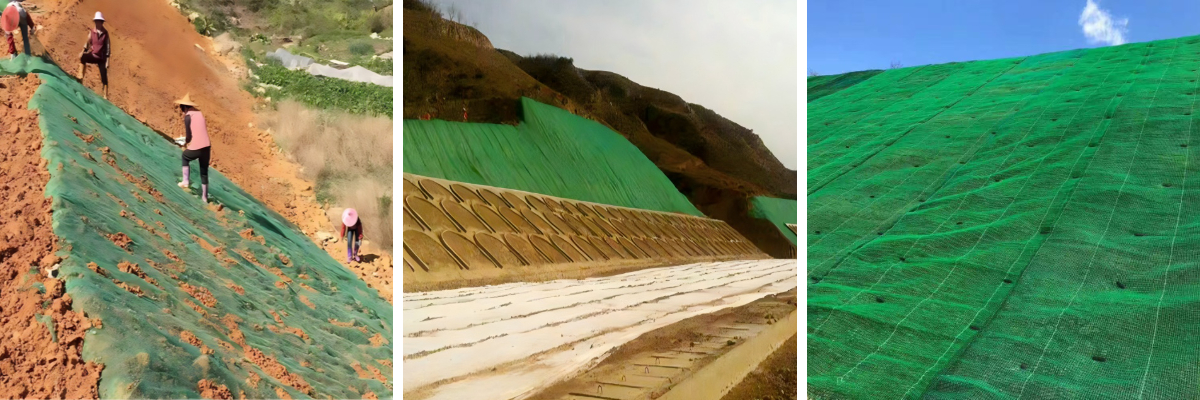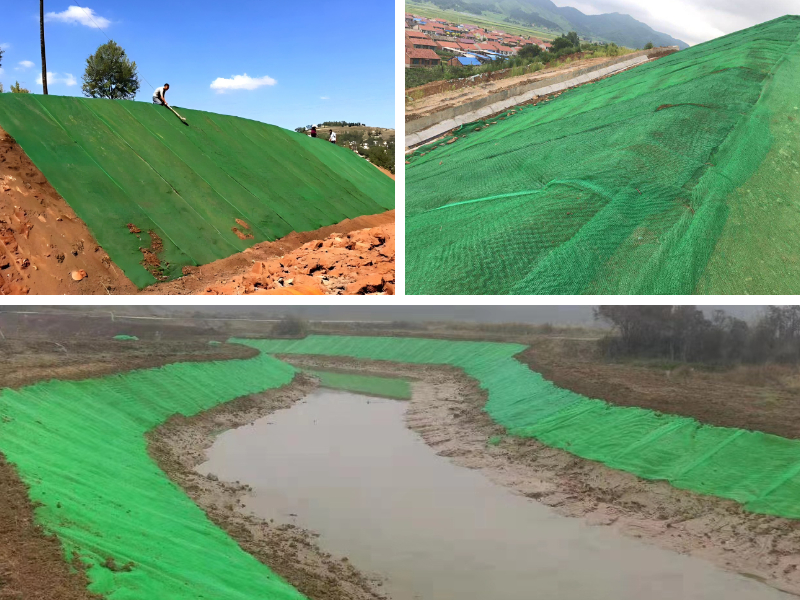Arid and Semi-Arid Regions: Specifications for Water Conservation and Soil Stabilization
Arid and semi-arid areas face special challenges—scarce water resources, relentless soil erosion, and fragile ecosystems that fighting to stand up to drought and wind. For communities, farmers, and environmental managers in these areas, water conservation and soil stabilization are now not simply priorities however requirements for survival and sustainability. Traditional strategies regularly fall short, as they fail to adapt to the intense prerequisites of low rainfall and excessive evaporation. However, 3D Vegetation Net Specifications have emerged as a tailor-made solution, supplying a aggregate of structural aid and ecological benefits. When appropriate implemented, understanding how to Lay 3D vegetation internet and grasp the Dimensions of 3D Vegetation Net can radically change degraded lands into resilient, water-efficient landscapes. This information explores how 3D vegetation nets tackle the core challenges of arid regions, their fundamental specifications, set up first-rate practices, and real-world influence on water conservation and soil health.
The Dual Crisis: Water Scarcity and Soil Erosion in Arid Zones
Arid and semi-arid areas get hold of much less than 500mm of annual rainfall, with excessive evaporation fees that similarly dissipate reachable water. This shortage disrupts agriculture, limits consuming water supplies, and weakens soil structure. Compounding the difficulty is soil erosion: wind and infrequent, excessive rainstorms strip topsoil, leaving in the back of compacted, infertile floor that can't continue water or assist plant growth.
Traditional options like gravel mulching or concrete boundaries are both unsustainable (consuming restricted resources) or ecologically hazardous (disrupting native plant life). What these areas want is a answer that stabilizes soil, reduces evaporation, and promotes herbal vegetation—all whilst aligning with nearby local weather conditions. This is the place 3D vegetation nets excel, as their diagram is rooted in working with, now not against, arid ecosystems.
3D Vegetation Net Specifications: Tailored for Arid Conditions
3D Vegetation Net Specifications are no longer one-size-fits-all; they are engineered to tackle the unique stressors of arid and semi-arid environments. Key specs consist of fabric durability, structural design, and compatibility with nearby vegetation—all aimed at maximizing water retention and soil stabilization.
Material and Durability Requirements
In arid regions, UV radiation is intense, and temperature fluctuations are intense (scorching days, bloodless nights). Thus, 3D Vegetation Net Specifications prioritize UV-resistant substances like high-density polyethylene (HDPE) or polypropylene. These polymers withstand degradation from sunlight, making sure the internet lasts 10–15 years barring breaking down. The fabric need to additionally be tear-resistant to face up to wind gusts and occasional animal activity, as fragile nets would fail to grant long-term soil support.
Dimensions of 3D Vegetation Net for Arid Applications
The Dimensions of 3D Vegetation Net immediately have an effect on its effectiveness in water conservation and soil stabilization. For arid zones, the net’s peak (or “protrusion”) is critical—it creates micro-catchments that lure rainwater and limit runoff. Typical heights vary from 5–10cm, as taller nets can create too tons color (hindering plant growth) whilst shorter ones fail to maintain ample water. The net’s mesh dimension is every other key dimension: 2–4cm apertures strike a stability between preserving soil particles and permitting seeds to germinate and roots to spread. Rolls of netting are frequently 2–4 meters huge and 50–100 meters long, enabling environment friendly insurance of large, degraded areas frequent in arid regions.
Ecological Compatibility
Top-tier 3D Vegetation Net Specifications prioritize compatibility with native plant species. The net’s shape ought to now not inhibit seedling emergence or root development. Many nets are designed with biodegradable components that smash down step by step over 2–3 years, via which time vegetation has installed sufficient to stabilize the soil independently. This ensures the internet supports, alternatively than replaces, herbal ecological recovery.
How to Lay 3D Vegetation Net for Maximum Impact
Proper set up is as crucial as the net’s specifications. Knowing how to Lay 3D vegetation internet in arid prerequisites ensures it features as a water-saving, soil-stabilizing device instead than a wasted resource. Follow these first-rate practices:
1. Site Preparation: Clear and Level
Start by means of clearing the website online of rocks, debris, and invasive weeds that may want to puncture the internet or compete with native vegetation. Rake the soil to create a smooth, even surface—uneven floor can reason water to pool in some areas and run off in others. For severely eroded sites, add a skinny layer of compost or topsoil to enhance fertility and water retention earlier than laying the net.
2. Align and Secure the Net
Unroll the 3D Vegetation Net parallel to the slope (if applicable) to limit runoff. Overlap adjoining rolls by using 15–20cm to create a non-stop barrier—gaps between rolls are susceptible factors the place soil erosion can restart. Secure the internet the usage of U-shaped anchors (made of galvanized metal or HDPE) spaced 50–100cm aside alongside the edges and seams. In windy areas, add greater anchors in the middle of the internet to forestall lifting.
3. Seed and Mulch: Boost Vegetation Growth
After laying the net, unfold native grass or shrub seeds evenly over the surface. The net’s 3D shape will maintain the seeds in place, stopping them from being blown away by means of wind. Cover the seeds with a skinny layer of straw or natural mulch to hold moisture and guard seeds from UV damage. In arid regions, think about the usage of drought-tolerant species like buffalo grass or sagebrush, which thrive in low-water conditions.
4. Water Initially (If Possible)
If water is available, gently irrigate the website after set up to set off seed germination and settle the internet into the soil. This preliminary watering jumpstarts vegetation growth, which is key to long-term soil stabilization. For water-scarce areas, time set up simply earlier than the wet season to leverage natural rainfall.
Benefits of 3D Vegetation Nets in Arid Regions
When paired with the proper specs and installation, 3D vegetation nets supply transformative benefits:
1. Water Conservation: Trap and Retain Moisture
The net’s 3D shape creates small depressions that seize rainwater, decreasing runoff through up to 70%. This trapped water infiltrates the soil slowly, recharging groundwater and retaining plant roots moist longer. The internet additionally acts as a mulch, shading the soil and decreasing evaporation by way of 30–40%—critical in areas the place each drop of water counts.
2. Soil Stabilization: Stop Erosion in Its Tracks
By maintaining soil particles in region and merchandising root growth, the internet prevents wind and water erosion. Over time, vegetation roots weave via the internet and soil, developing a residing mat that stabilizes the floor even after the internet biodegrades.
3. Ecological Restoration: Support Native Life
Native vegetation grown thru the internet affords habitat for pollinators, birds, and small mammals, restoring stability to degraded ecosystems. This ecological healing additionally improves soil fertility, developing a cycle of regeneration that reduces reliance on synthetic inputs.
Conclusion: 3D Vegetation Nets—A Lifeline for Arid Regions
Arid and semi-arid areas require options that are resilient, water-efficient, and ecologically friendly. 3D Vegetation Net Specifications, when tailor-made to nearby conditions, and appropriate expertise of how to Lay 3D vegetation net, provide precisely that. By focusing on the proper Dimensions of 3D Vegetation Net—height, mesh size, and material—these nets tackle the dual crises of water shortage and soil erosion, turning barren lands into productive, sustainable landscapes.
For farmers, conservationists, and communities in arid zones, 3D vegetation nets are greater than a tool—they are an funding in the future. They limit water waste, defend soil health, and aid native ecosystems, all whilst requiring minimal maintenance. As local weather alternate intensifies arid prerequisites worldwide, adopting 3D vegetation nets turns into no longer simply a choice, however a necessity. Embrace this technology, and you’ll construct resilience that lasts for generations.
Contact Us
Company Name: Shandong Chuangwei New Materials Co., LTD
Contact Person :Jaden Sylvan
Contact Number :+86 19305485668
WhatsApp:+86 19305485668
Enterprise Email: cggeosynthetics@gmail.com
Enterprise Address: Entrepreneurship Park, Dayue District, Tai 'an City,
Shandong Province










